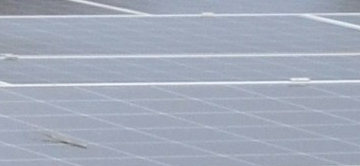In France where electric power is mainly generated by nuclear reactors, the price surge on wholesale markets is driven by a marginal energy source: natural gas. This paradox is not due to a market failure but to the particularities of electricity production and consumption.
Demand and production capacity
Why did the price of an electric megawatt-hour exceed €600 on December 21, 2021 on the epexspot platform when we know that EDF must sell part of its production to its retail competitors at a price of €42 under the ARENH mechanism? The answer is that the market mechanism that leads to price peaks such as the one in December informs us about the tensions in the electricity sector, while the ARENH and its recent adjustments are a political-administrative deal between France and the European authorities in order to develop competition in the retail electricity market. It can therefore be manipulated according to the moods of public opinion and electoral dates.
Price peaks (capped at €3,000/MWh on epexspot) allow costs to be minimized, a paradox that surely merits further explanation. The problem to be solved is far from simple: it is a question of supplying a non-storable product to users whose demand varies constantly according to the hours, days and seasons, and who do not know their real needs in kWh since these pass through the equipment installed at the places of consumption, for example the radiators to ensure heating. It should be added that the prospects for electrification of industry and transport to fight global warming will require colossal investments over the next few decades, and therefore sufficient levels of profitability to attract investors.
If we want to exclude supply interruptions at all costs, since the product is not storable, we need to stack up enough production units to serve the demand permanently. It remains to be seen how to build up this stock of production (energy mix) and in what order to use the different technologies (merit order).
Building the energy mix
The choice of technologies to be stacked is determined by the expected duration of use. To produce throughout the 8760 hours of the year, it is better to install equipment using the technology with the lowest operating costs (primary energy + C02 allowances), but this requires significant investments. This is the case for nuclear power plants. Conversely, for short periods of use, technologies with high operating costs will be installed because they have lower installation costs. This is the case of gas-fired power plants. Let's leave aside for the moment the other types of energy sources. We need to install high fixed cost/low variable cost power plants to meet the base load demand throughout the year (in France nuclear power plants, elsewhere coal-fired power plants), and to invest in low fixed cost/high variable cost power plants (e.g. combined cycle gas power plants) which will only be used episodically to supplement the production of the base load power plants when demand peaks.
Once the types of equipment have been chosen, they must be sized. To do this, we use the load duration curve, i.e. the forecast of the 8760 hourly demands of the year presented not in calendar order but in decreasing order of the power to be supplied (see the book by T.O. Léautier). We thus know the minimum demand that will have to be served throughout the year, the maximum demand that will be exceptional, and all the intermediate powers with their call duration. As an example, in 2021 for France the two extreme values were respectively 29,660 MW on 08 August at 7 a.m. and 88,440 MW on 11 January at 9.30 a.m.
Dispatching by order of precedence
The demand to be served by the so-called "dispatchable" units (thermal and nuclear power plants) is not the total demand. It is the residual demand, calculated after subtracting the production of the so-called " un-controllable" energies, solar and wind power. We put aside hydroelectric power plants, which can be more or less controllable depending on the capacity of the reservoir and other uses of water (irrigation, preservation of biodiversity, low water replenishment). On the wholesale market, the installed controllable power plants will be called according to the bids of the various producers, starting of course with the lowest ones, i.e., those with the lowest operating costs. For each hour, the equilibrium price arises from the comparison of those bids (the merit order revealed by the market or supply function) with the residual demand (see epexspot). When residual demand is low (e.g. during a well ventilated summer weekend), supply and demand intersect at the level of the operating cost of "base load" power plants, i.e. those using nuclear or coal, and the price is therefore low. When demand is high (in the winter at the end of the day), the intersection of the two functions occurs at the cost of additional power plants, the gas turbines. If this happens when gas and CO2 emission allowances are very expensive, the price of electricity peaks, well above the operating cost of nuclear power plants.
Generation units that only operate at peak times must be able to cover all their costs, including their fixed costs, over a small number of hours. Consumers could therefore accept that since this part of the production is costly, the prices paid to the gas-fired plants should be high. But some people, even in ministerial circles, wonder why the high price of peak hours also benefits base load plants even though they are operated throughout the year, except during maintenance periods. If baseload power plants did not benefit from this revenue, the price of electricity would have to be increased during off-peak hours to cover their full cost, which would push down off-peak demand and thus reduce the capacity to be installed in baseload. In the end, the technology mix would no longer be the one that minimizes costs. The optimization of the power mix and the pricing of energy should not be treated separately. Each one conditions the other.
*
* *
Soaring energy prices remind us that we have embarked on a costly energy transition that requires massive investments. It is in circumstances where the markets best fulfill their whistleblower mission to guide these investments that they are most criticized. With Marcel Boiteux, we believe that "tariffs are made to tell costs like clocks tell time". Preventing energy prices from rising or decreasing during periods of tension leads to inefficient choices that will have to be paid for anyway at other times.





